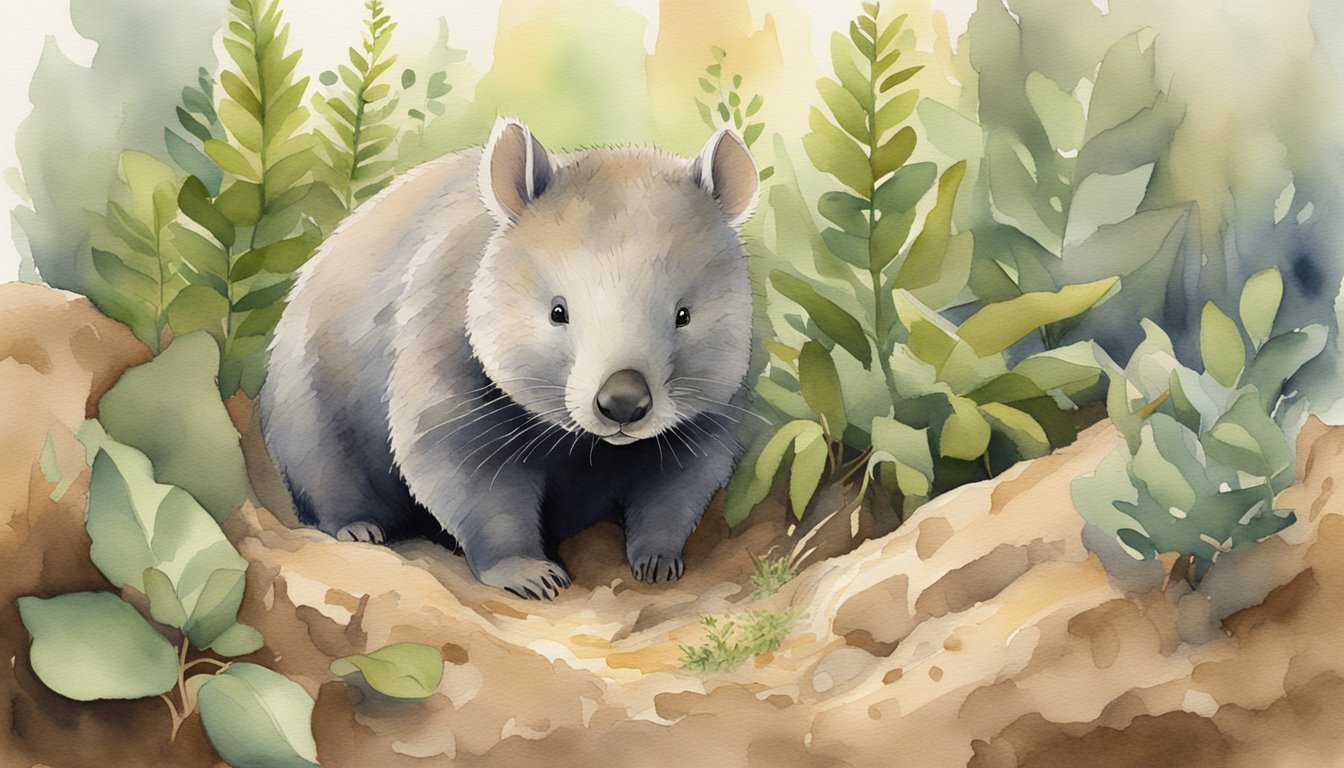Wombat Fundamentals

In exploring the fundamentals of wombats, one discovers these sturdy marsupials exhibit unique characteristics and occupy a specialized niche in Australia’s ecosystems.
Species and Classification
Wombats belong to the family Vombatidae and are divided into three extant species: the Common wombat (Vombatus ursinus), the Southern hairy-nosed wombat (Lasiorhinus latifrons), and the critically endangered Northern hairy-nosed wombat (Lasiorhinus krefftii). These marsupials are closely related to the koala and possess a pouch for rearing their young.
Physical Characteristics
Wombats are known for their short legs, muscular build, and distinctive waddle. Measuring roughly 1 meter in length, these animals can weigh between 20 to 35 kilograms. They feature small, stubby tails, and their sharp claws and powerful legs make them adept at digging extensive burrows, which are crucial for their survival.
Habitat and Distribution
Wombats are indigenous to Australia and can be found in a variety of habitats, from the mountainous, forested, and heathland regions of southern and eastern Australia, including Tasmania, to the Epping Forest National Park in Queensland. The distribution of the Northern hairy-nosed wombat is more restricted, heavily impacted by factors such as predation by dingoes and habitat competition with kangaroos.
Wombat Lifestyle and Conservation
Wombats are fascinating marsupials native to Australia, known for their distinctive burrowing habits and stocky appearance. This section delves into their unique diet and foraging habits, reproductive behaviors, as well as the current threats they face and ongoing conservation efforts.
Diet and Foraging Behavior
Wombats are herbivores, primarily nocturnal, and spend much of their nighttime activity grazing on grasses, herbs, bark, and roots. Their powerful incisor teeth grow continuously, allowing them to feed on tough vegetation. The common wombat, or Vombatus ursinus, is particularly adept at finding and consuming a wide variety of plant material.
Reproduction and Development
Female wombats possess a backward-facing pouch to protect their young while digging. After a relatively short gestation period, typically 20-30 days, a single joey is born. Blind and hairless, the joey stays in the pouch for roughly six months before emerging. Although they are weaned after 15 months, joeys may stay with their mothers until they are sexually mature at around 18 months.
Threats and Preservation Efforts
Despite their tough exterior, wombats face numerous threats including habitat destruction, disease, and predation. The northern hairy-nosed wombat is considered critically endangered, with threats from competitive grazing livestock and introduced pests such as rabbits. Conservation measures include protecting habitats and breeding programs to increase population numbers. Specific to their conservation status, the common wombat is listed as least concern on the IUCN Red List, indicating stable populations in contrast to their more endangered relatives.

